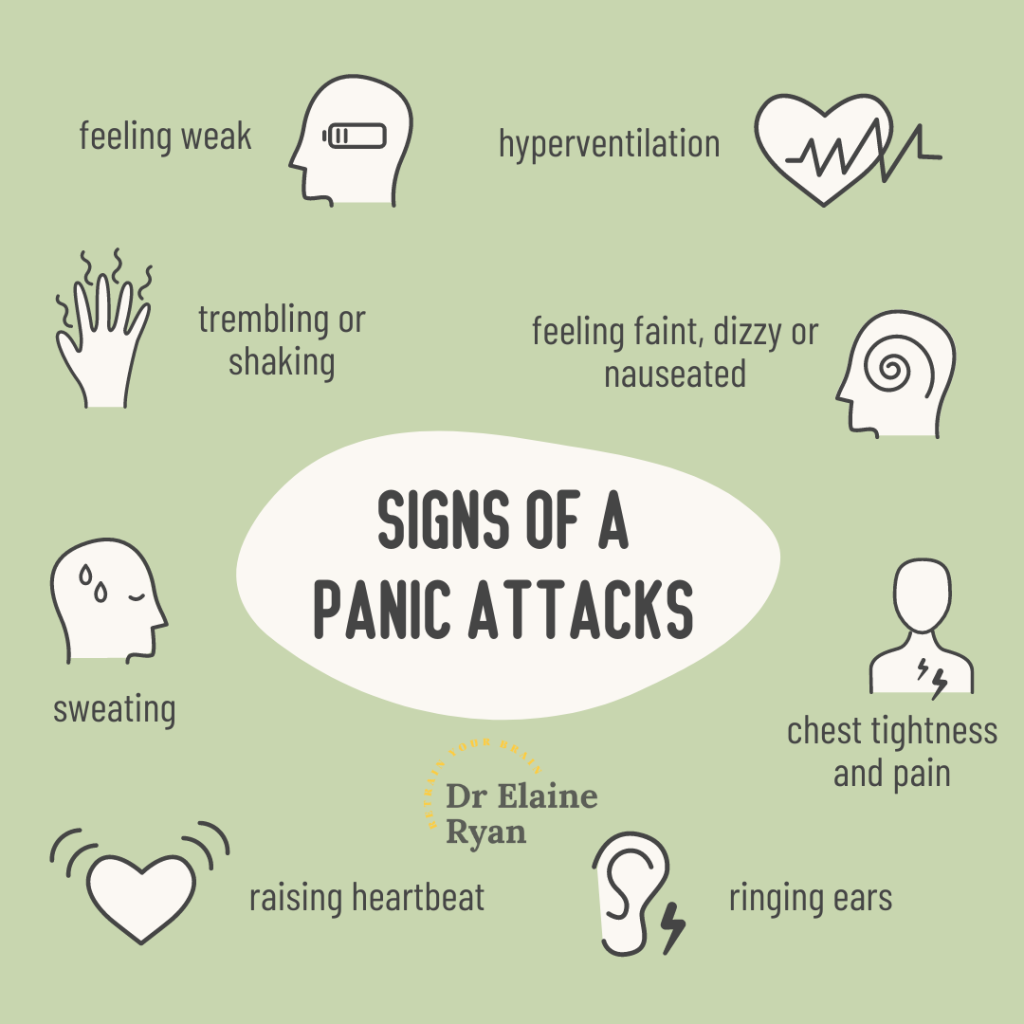Panic disorder and anxiety, two conditions often used interchangeably, are distinct in their clinical presentations. I want to take some time today to talk about the differences, clinical characteristics, prevalence, and impact of both conditions.
I’ll also touch on the diagnostic criteria and symptoms that set them apart and end with treatment options.
By understanding the difference between panic disorder and anxiety, we can foster empathy, promote early intervention, and ultimately improve mental health outcomes.
Panic Attacks Self-help

Dr Ryan’s online self-help course for Panic Attacks
Defining Panic Disorder and Anxiety
Panic disorder is a type of anxiety disorder characterized by recurrent, unexpected panic attacks. If you haven’t already done so you can read my guide to panic disorder here. I shall also list relevant articles below.
- Treatments for panic disorder
- Long term effects of panic
- Great overview on MayoClinic
- These attacks are episodes of intense fear that trigger severe physical reactions when there is no real danger or apparent cause.
On the other hand, anxiety is a general term for several disorders that cause nervousness, fear, apprehension, and worrying.
These disorders affect how we feel and behave and can cause physical symptoms.
- Panic disorder: Recurrent, unexpected panic attacks
- Anxiety: General term for disorders causing nervousness, fear, apprehension, and worrying
Understanding these definitions is the first step in distinguishing between panic disorder and anxiety.
Clinical Characteristics of Panic Disorder
Panic disorder is marked by the presence of panic attacks that often occur out of the blue. When I read that, even though I wrote it, is doesn’t seem to fully cover it. I have had panic disorder myself, and it is the most terrifying thing that has happened to me. I was one of the many people with panic disorder who thought they were dying.
Generalized Anxiety Disorder (GAD) and Other Anxiety Disorders
Generalized Anxiety Disorder (GAD) is one type of anxiety disorder.
It is characterized by persistent and excessive worry about various different things.
People with GAD may anticipate disaster and may be overly concerned about money, health, family, work, or other issues.
Prevalence and Impact on Quality of Life
Panic disorder and anxiety disorders are prevalent mental health conditions that affect a significant portion of the population.
They can profoundly impact an individual’s quality of life, affecting their ability to work, maintain relationships, and engage in everyday activities.
Understanding the prevalence of these disorders can help to highlight the importance of early intervention and effective treatment strategies.
Panic Disorder in the General Population
Panic disorder affects about 2-3% of the adult population in a given year.
It is twice as common in women as it is in men.
Anxiety Disorders: How Common Are They?
Anxiety disorders are the most common mental health disorders worldwide.
They affect 18.1% of adults in the United States (approximately 40 million adults between the ages of 18 to 54).

Symptoms and Diagnostic Criteria
Recognizing the symptoms of panic disorder and anxiety is the first step towards seeking help.
However, these symptoms can often be mistaken for other health conditions, making accurate diagnosis challenging.
It’s important to understand the diagnostic criteria for these disorders to ensure appropriate treatment.
Recognizing Panic Disorder Symptoms
Panic disorder is characterized by recurrent, unexpected panic attacks.
These attacks are episodes of intense fear that trigger severe physical reactions when there is no real danger or apparent cause.
Symptoms can include heart palpitations, sweating, trembling, shortness of breath, and a fear of losing control or dying.
Identifying Symptoms of Anxiety
Anxiety, on the other hand, is characterized by persistent and excessive worry about different aspects of life.
Symptoms can include restlessness, being easily fatigued, difficulty concentrating, irritability, muscle tension, and sleep disturbances.
It’s important to note that everyone experiences anxiety differently, and symptoms can vary widely from person to person.
Treatment Options and Coping Mechanisms
Treatment for panic disorder and anxiety involves a combination of medication, psychotherapy, and lifestyle changes.
The goal is to reduce symptoms, improve quality of life, and prevent the recurrence of panic attacks or anxiety episodes.
It’s important to remember that treatment is highly individualized and what works for one person may not work for another.
Medication and Psychotherapy for Panic Disorder
Medication for panic disorder can include selective serotonin reuptake inhibitors (SSRIs) and benzodiazepines.
Psychotherapy, particularly cognitive-behavioral therapy (CBT), can also be highly effective in treating panic disorder.
CBT helps individuals understand their thoughts and behaviors, and develop coping strategies to manage symptoms.
Cognitive-Behavioral Therapy (CBT) and Other Treatments for Anxiety
CBT is also a first-line treatment for anxiety disorders.
It helps individuals identify and challenge their thought patterns that lead to anxiety, and develop coping mechanisms.
Other treatments can include lifestyle modifications, relaxation techniques, and in some cases, medication.
Conclusion: The Importance of Understanding and Support
Understanding the difference between panic disorder and anxiety is crucial for effective treatment and management.
Support from healthcare providers, family, and friends, along with self-care strategies, can significantly improve the quality of life for those living with these conditions.
